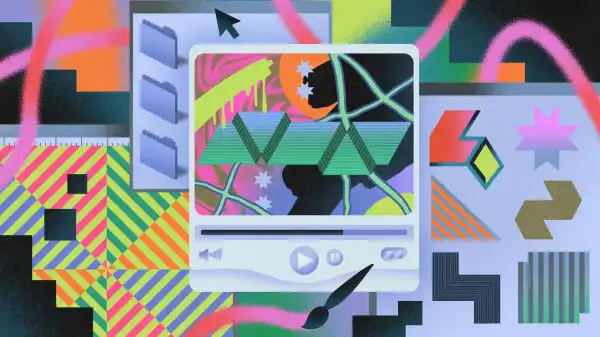
Save this storySave this storySave this storySave this story
In 2002, 35-year-old Luxembourg-based artist Michel Majerus was on a short flight from Berlin, where he lived, to his home country when a plane crashed, claiming his life and the lives of 19 others on board. His death cut short a rapidly burgeoning artistic career. Majerus had been the subject of a solo museum show in Switzerland in 1996, and in 1999 he created a large-scale installation for the Venice Biennale. Gone would be his groundbreaking work, which included individually painted canvases and room-sized installations that fused the vocabulary of early digital culture—lo-fi video games, internet fonts—with the aggressive brushstrokes and flat planes of color borrowed from Abstract Expressionism and Minimalism. Majerus’s powerful Apple PowerBook G3 laptop, however, survived the crash—or at least its hard drive did.
The computer remained in his estate for years, an untouched relic. During this time, Majerus’s work continued to be exhibited in galleries and museums, quietly but persistently influencing a generation of artists making work using and responding to the internet. Then, in 2017, the artist Cory Arcangel, known for his digital projects, learned of Majerus’s hard drive and began a quest to access its contents. Arcangel’s interest was piqued by an untitled Majerus painting from 2000 that his assistant had shown him on Instagram. The background of the painting was covered in acid-pastel blocks of color reminiscent of the Neo-Geo style of the ’80s, but the foreground contained provocative phrases that looked like they could have been lifted from Geocities or a Matrix-era rave poster: “newbie,” “burned out,” “fuck the artist’s intent.” Majerus intuitively understood that the internet would lead to a huge clash of styles and reference points—everything from Super Mario to Jackson Pollock coexisting in pixels. The untitled painting evoked nostalgia among dial-up millennials, but Arcangel, whose own work has included a hacked version of “Super Mario Bros.” that leaves only the clouds, was also struck by how contemporary it felt. On a recent Google Meet call from the stark apartment that the gallery representing Majerus’s estate maintains in Berlin, Arcangel noted, “It just came at me from a hundred different angles, and each of those little things sent me into a spiral of associations.”
Given Majerus’s use of digital images, such as video game sprites, and the fluency of his references to technoculture, Arcangel surmised that Majerus was as much a digital artist as an analog painter. Perhaps the laptop was key to his process. Arcangel brought it to the attention of Dragan Espenschied, the director of preservation at Rhizome, a New York institution that archives the history of digitally created art. There was a risk that the equipment might fail, and the saved files would be lost forever. Majerus’s legacy was entrusted to a data-recovery company to create a digital copy of the disk. Espenschied then used an emulator—a program that mimics the entire architecture of an old device—to load up a facsimile of the laptop, including its early-2000s operating system and the pixelated file icons on Majerus’s cluttered desktop, which featured a background image from Ms. Pac-Man. It was his computer, just as he had left it, down to the Photoshop shortcuts he had customized and the window layout. “It was as if he had just walked out of the room,” Arcangel said.
The computer’s contents revealed Majerus to be an artist who was “aggressively digital native,” Arcangel said. From the files, Arcangel was able to reconstruct how Majerus downloaded and collaged images of Frank Stella’s geometrically designed paintings from the 1960s, enlarging, cutting, and rotating them, then using them as the basis for his own wall-sized “pressure group” paintings, created in 2002. Majerus used Photoshop to design his works, then virtually installed them in specific galleries in advance, adjusting the layout to the inch before his brush touched the canvas. Arcangel described Majerus as a kind of robotic “printer,” making all his decisions in advance and then manually rendering the result.
The laptop also contained touching artifacts from Majerus’s life: a photograph of what appears to be a tiny New York City hotel room, with the artist’s thick black laptop on the hotel bed next to a bulky power adapter, a pizza box, candy, and a folder of CDs, with a TV playing in the background. The result is a portrait of the artist as an itinerant hacker, and a snapshot of digital creation in the years before social media or cloud computing. “There are only a few years where someone carried their entire studio around with them,” Ar noted.
Sourse: newyorker.com






